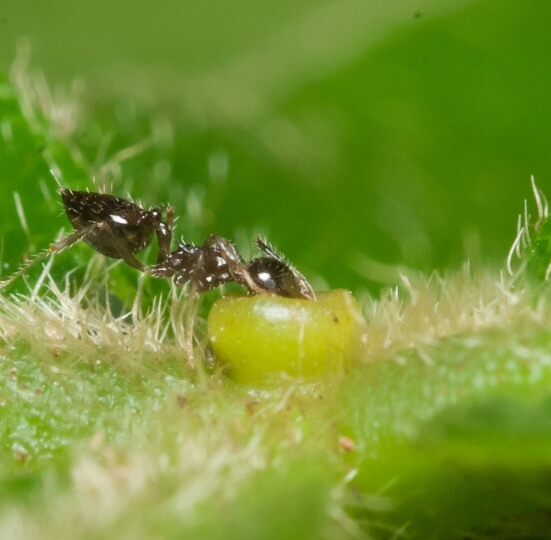2023-05-12 ハーバード大学

An acrobat ant (Crematogaster sp.) feeding at a bowl-shaped extrafloral nectary on an Inga tree (Lauren Nichols/NC State University)
◆研究チームは、さまざまな分野の科学文献を分析し、自然界のシェフが、自分自身や子孫の生存を高めるために食事や欺くものを用意するように進化したことを発見しました。彼らは、人間のシェフと同じように、配置、色、香りなどの戦略を使って消費者を惹きつけます。この研究により、自然界のシェフから得た知見は、肉の味や匂いを模倣した植物や菌類の肉を使った代替品の開発など、料理の創造性を刺激する可能性があることが示唆されました。
<関連情報>
- https://seas.harvard.edu/news/2023/05/natures-chefs-how-and-why-organisms-make-food-others
- https://academic.oup.com/bioscience/advance-article-abstract/doi/10.1093/biosci/biad026/7115688
ネイチャーズシェフ:生命の木にまたがる食物製造・調理種の隠れた多様性を統合する Nature’s chefs: Uniting the hidden diversity of food making and preparing species across the tree of life
Brad W Taylor, Bradley Allf, Skylar R Hopkins, Rebecca E Irwin, Michelle Jewell, Omer Nevo, Lauren M Nichols, Nabila Rodríguez Valerón, Joshua D Evans, Pia M Sörensen,Robert R Dunn
BioScience Published:19 April 2023
DOI:https://doi.org/10.1093/biosci/biad026
Abstract
There may be no such thing as a free meal, but many species have evolved mechanisms for other species to consume the literal fruits of their labors. In the present article, inspired by a chef’s recognition that such species are “nature’s chefs,” we consider food-making species from the plant, animal, and fungal kingdoms, which produce food or mimic food to increase their own fitness. We identify three ways that species can produce or prepare meals—as food, drinks, or lures—and further distinguish between those providing an honest meal and those deceiving consumers with food mimics. By considering these species holistically, we highlight new hypotheses about the ecology and evolution of the widespread phenomenon of organisms that produce food for other organisms. We find surprising and useful generalities and exceptions among species as different as apple trees and anglerfish by examining species interactions across taxa, systems, and disciplines.


